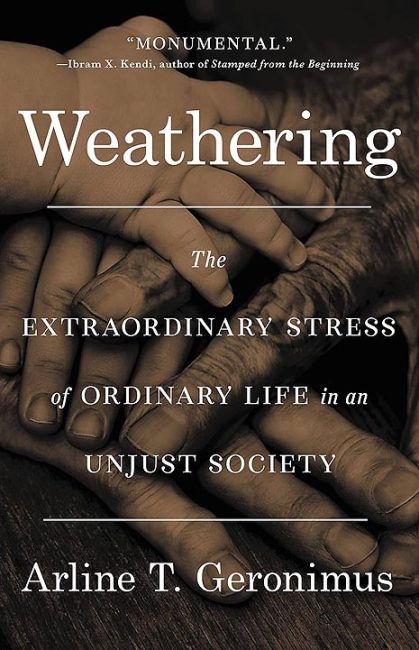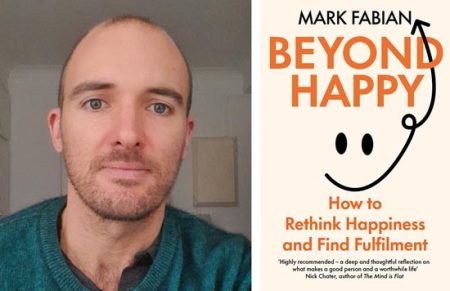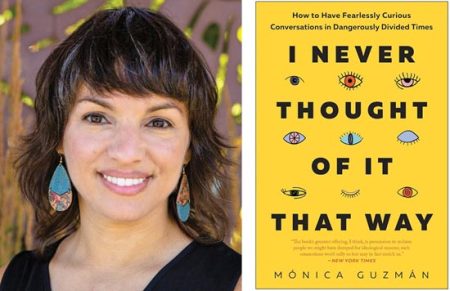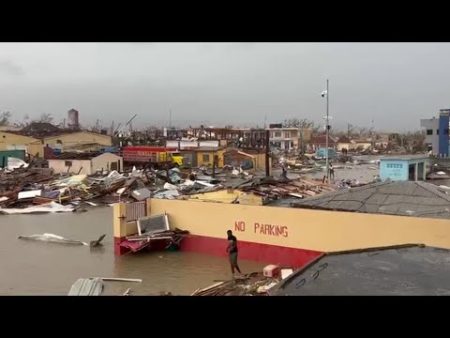Page & Screen – April 2015
 The Human Crossroads: Where the Past, Politics, and the Personal Meet
The Human Crossroads: Where the Past, Politics, and the Personal Meet
reviews by Sharon L. Shervington
Whether in lectures, magazine articles, or online content, Henry Louis Gates Jr. is one of our most prolific and authentic voices.
That shows in his latest effort, Black in Latin America, a four-part, four-hour series that aired on PBS and is now available on disk. It is first-rate in originality, depth, and execution. (PBS Direct)
Part one is set in Haiti and the Dominican Republic. And while the two countries share the island of Hispaniola, they see themselves quite differently. Haiti was home to the successful revolution by enslaved people against France in the 18th century which ended with the founding of the country. Its more multiracial neighbor prided itself on the results of policies intended to promote whiteness.
It was astonishing to learn that countries like DR, as well as Cuba and others, budgeted millions of dollars as incentives for Europeans, mostly Spaniards, to move there and lighten things up. History professors talk about that and about how—and this was common in all the countries covered in the documentary—great black leaders from the past were either erased from history or had their nonwhite features changed in educational materials.
In other episodes Mr. Gates also meets, and sometimes shares traditional foods with, scholars and experts in Brazil, Mexico, and Peru. Surprisingly, Peru’s population includes at least two million black Peruvians. Politics, sociology, and the arts are all here. Gates talks with an actress in Brazil who was the first black woman to be on the cover of a major magazine there and who became an activist as a result of her experiences. He visits with musicians in Cuba and Brazil, moved by their innovative rhythms. The centuries of enslavement and its aftermath in these countries are carefully examined, and paths are drawn to show how current discrimination, particularly in employment, housing, and education, continues virtually unabated.
The history presented here is much more comprehensive than we are used to, and comparisons of how cruel policies led to present-day realities also are very fresh. But what is most shocking is the role that America and its troops played through its consistent alignment with the most racist and undemocratic factions. Mr. Gates makes clear the relationship between our military involvements, often primarily to safeguard business interests, and the troubles that continue to afflict these countries.
This series is a must for history buffs, students, parents, and educators, who want an unvarnished sugar-free version of the past.
 The perfect companion to this series is Empire’s Crossroads, a History of the Caribbean from Columbus to the Present. The author, Carrie Gibson, has woven together a history of colonialism and rebellion—commerce run amok and local resistance—into a thoughtful narrative that analyzes the factors and motivations responsible for them.
The perfect companion to this series is Empire’s Crossroads, a History of the Caribbean from Columbus to the Present. The author, Carrie Gibson, has woven together a history of colonialism and rebellion—commerce run amok and local resistance—into a thoughtful narrative that analyzes the factors and motivations responsible for them.
Ms. Gibson acknowledges that she has “cast a wide net,” and explains that one of her main goals was to use this history as a chance to “meditate on a few modern issues, not least so-called “‘globalization’ and consumerism.” From the 1830s onward abolition slowly spread across the West Indies, and into that vacuum Europeans introduced labor from India and China. (Atlantic Monthly Press; $28; 447 pages)
 For a kaleidoscopic view of how these shifting masses of circumstance affected individuals, a memoir is in order, specifically, Finding Samuel Lowe, China, Jamaica, Harlem. The book is extraordinary because it effectively pieces together the lives of ordinary women, from a time when these kinds of people left behind few written records or narratives. Ms. Williams Madison, a retired television executive who now heads her own company, grew up in Harlem with her half-Chinese mother, Nell, and two elder brothers. Her mother and father were estranged but she saw her father quite often, and one of her seminal experiences was a visit to Jamaica with him.
For a kaleidoscopic view of how these shifting masses of circumstance affected individuals, a memoir is in order, specifically, Finding Samuel Lowe, China, Jamaica, Harlem. The book is extraordinary because it effectively pieces together the lives of ordinary women, from a time when these kinds of people left behind few written records or narratives. Ms. Williams Madison, a retired television executive who now heads her own company, grew up in Harlem with her half-Chinese mother, Nell, and two elder brothers. Her mother and father were estranged but she saw her father quite often, and one of her seminal experiences was a visit to Jamaica with him.
The first part of the book examines the difficult and tragic circumstances of Nell’s early life in Jamaica, which include her abandonment by both parents. Nell’s father was the Samuel Lowe of the title. Here Ms. Williams also describes a trip to the Olympics in China and how that visit led to an unshakable determination to find her Chinese relatives, her grandfather’s people. Ultimately she is able to pull together her American family and engineer a reunion of both sides of the family in China and Jamaica.
She also offers in-depth biographies of her grandfather, a successful businessman in Jamaica and eventually China, mixed with analysis of race and class and how political conditions—such as the Great Depression and the Cultural Revolution in China—affected the family’s history.
She relates with glee the full-force reunion of the family for the 93rd birthday of her Aunt Adassa, her mother’s half-sister. This is also a kind of coming-of-age story and a redemption tale with a firm foundation on little known and elusive pieces of the historical record. (Finding Samuel Lowe, China, Jamaica, Harlem; by Paula Williams Madison; Amistad; $25.99; 275 pages.)
Helping to make history better are Nicholas Kristof (the well-known New York Times columnist) and Sheryl WuDunn, who together won the Pulitzer Prize. Their earlier book, Half the Sky: Turning Oppression into Opportunity for Women Worldwide, helped them develop an even more devoted following.
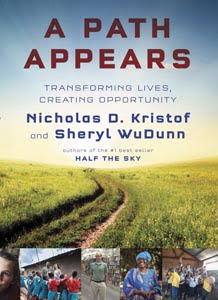 Their latest effort is A Path Appears; Transforming Lives and Creating Opportunity, and it is a kind of continuation of Half the Sky. Here they take a deeper look into how charities function in the 21st century using the kinds of marketing strategies and models that are used by businesses to maximize results. While most of the book looks at projects as diverse as digging wells, microloans, and medical efforts in poor countries around the globe, there is a good deal of material on poverty, especially child poverty, in the U.S.
Their latest effort is A Path Appears; Transforming Lives and Creating Opportunity, and it is a kind of continuation of Half the Sky. Here they take a deeper look into how charities function in the 21st century using the kinds of marketing strategies and models that are used by businesses to maximize results. While most of the book looks at projects as diverse as digging wells, microloans, and medical efforts in poor countries around the globe, there is a good deal of material on poverty, especially child poverty, in the U.S.
Some of the most moving material involves stories that are personal for the authors. For example, they talk about a girl, Jessica, a playmate of their children and a neighbor near the family farm in Oregon. They worried about her because her mother, who gave birth to Jessica as a teenager, was involved in the meth trade and she faced many other challenging family circumstances that are linked to poverty. (Knopf; $27.95; 382 pages)
There is also a documentary with the same name, A Path Appears, with many top stars including George Clooney, Ashley Judd, and Regina King, some of whom travel with Mr. Kristof to organizations in Atlanta and Kenya that address the film’s key elements, sex trafficking and domestic violence in the U.S. and gender-based violence everywhere. Sadly, as Mr. Kristof points out, our media is doing very little on this enormously-important story. (PBS Direct)
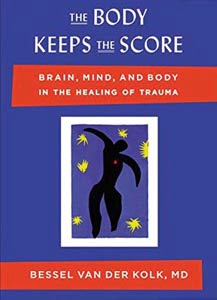 And it is enormously important. That is the message of The Body Keeps the Score: Brain, Mind and Body in the Healing of Trauma. This is a synthesis of the latest research into trauma by a pre-eminent psychiatrist and scientist.
And it is enormously important. That is the message of The Body Keeps the Score: Brain, Mind and Body in the Healing of Trauma. This is a synthesis of the latest research into trauma by a pre-eminent psychiatrist and scientist.
In addition to a very readable overview of literature in brain function; behavioral science and psychological theory, the author draws deeply from over 30 years of experience in the field with many examples from his case files. He talks about the lifelong implications of child abuse and domestic violence for individuals and families and discusses the cost to society of not addressing these realities.
While there is still a perception that trauma is something that largely affects returning soldiers and victims of natural disasters or bombings, Dr. Van Der Kolk notes: “Trauma remains a much larger public health issue, arguably the greatest threat to our national well-being.… I wish I could separate trauma from politics, but as long as we continue to live in denial and treat only trauma while ignoring its origins, we are bound to fail.” (The Body Keeps the Score: Brain, Mind and Body in the Healing of Trauma, written by Bessel Van Der Kolk; Viking; $27.95; 443 pages)

